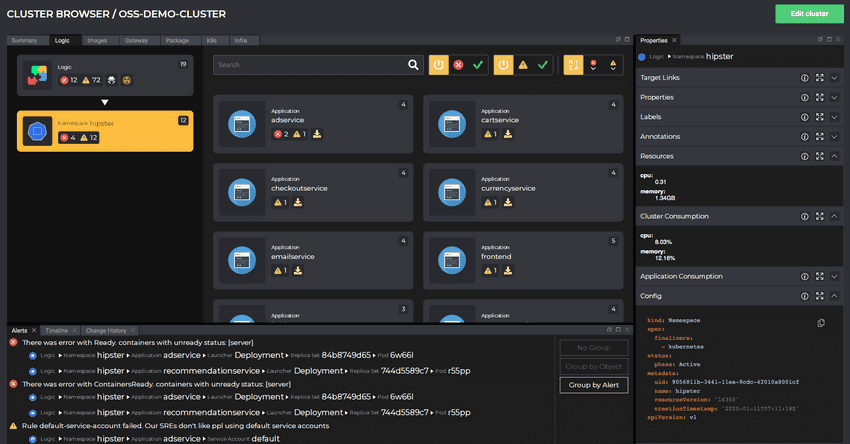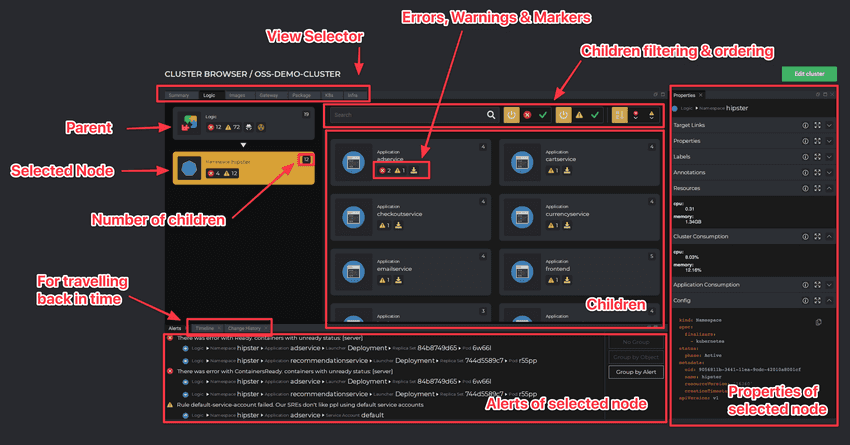Application Centric UI
Traditional Kubernetes Dashboards, UIs, and CLI tools have one thing in common. You get to choose the resource kind (Pod, Deployment, ConfigMap, Ingress, etc.) and then browse instances of the selected kind. A typical application consists of dozens of loosely couple manifests across numerous resource kinds (not even mentioning CRDs). That makes troubleshooting and analysis before making changes to the application manifests extremely difficult. DevOps and SREs not only need to have deep expertise in Kubernetes and Cloud-Native ecosystem but also have complete knowledge of application deployment specifics used within the organization.
Kubevious is different. Kubevious looks at the entire cluster configuration and state, correlates all YAML manifests and arranges them by application ownership. That allows operators to have complete visibility of application components and dependencies. Sometimes that would mean avoiding configuration conflicts or aiding with troubleshooting when the timing is key.
Because Kubevious correlates Kubernetes YAML manifests and extracts application-level insights, that also allows executing sophisticated validations and best practices checks. To learn more in built-in validators documentation.
Kubevious UI is highly graphical. Kubevous renders Kubernetes objects in a tree structure. Each node comes with a unique set of properties. For example, a Namespace node shows apps that consume most resources, but ServiceAccount node - a matrix of RBAC rules. Error and warning alerts are visible at each tree node level for the entire subtree. Kubevious GUI provides a high-level summary on the top tree nodes and guides a path to the YAML manifest of interest. Text and alert severity-based filters help with narrowing down results.


Specialized Kubernetes Views
Kubevious GUI comes with specialized views focusing on different use-cases, such as application structure, API gateway, image repository, Helm packaging, and others. The GUI also allows teleportation from one view to another. For example, determining if and how NGINX containers are exposed through Ingresses is very easy with Kubevious.